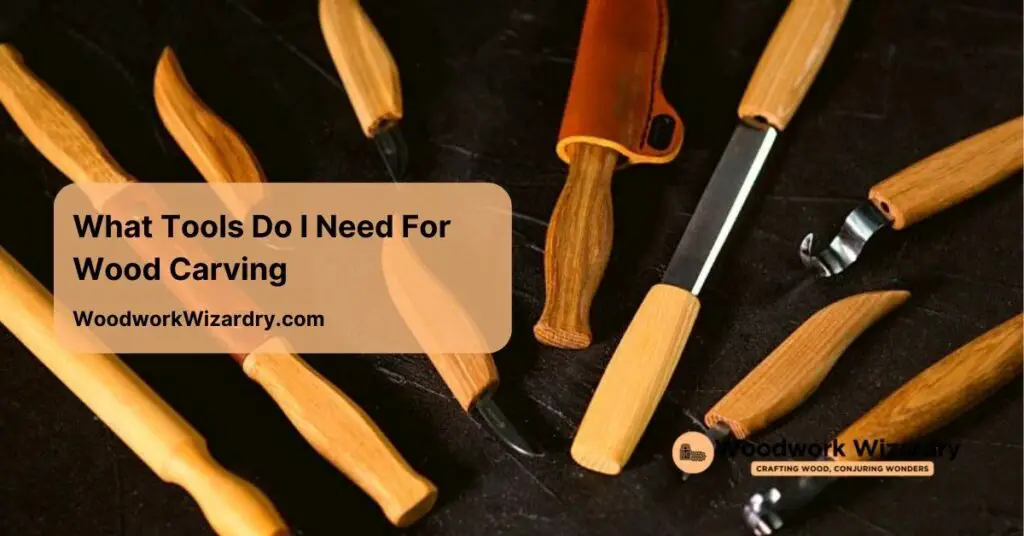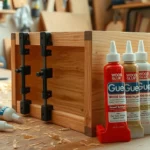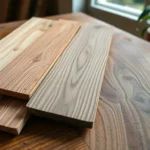Wood carving is more than just a create—it’s a way to transform a simple block of wood into something extraordinary. Whether you’re aiming to create intricate designs or functional pieces, having the right tools can make all the difference. Without them, even the most creative ideas can feel out of reach.
Imagine the satisfaction of shaping wood effortlessly, watching your vision come to life with each precise cut. The right tools don’t just make carving easier—they unlock your potential, helping you achieve professional-quality results, even as a beginner. So, if you’re ready to jump into this timeless art form, let’s explore the essential tools you need to carve with confidence and ease.
Essential Tools For Wood Carving
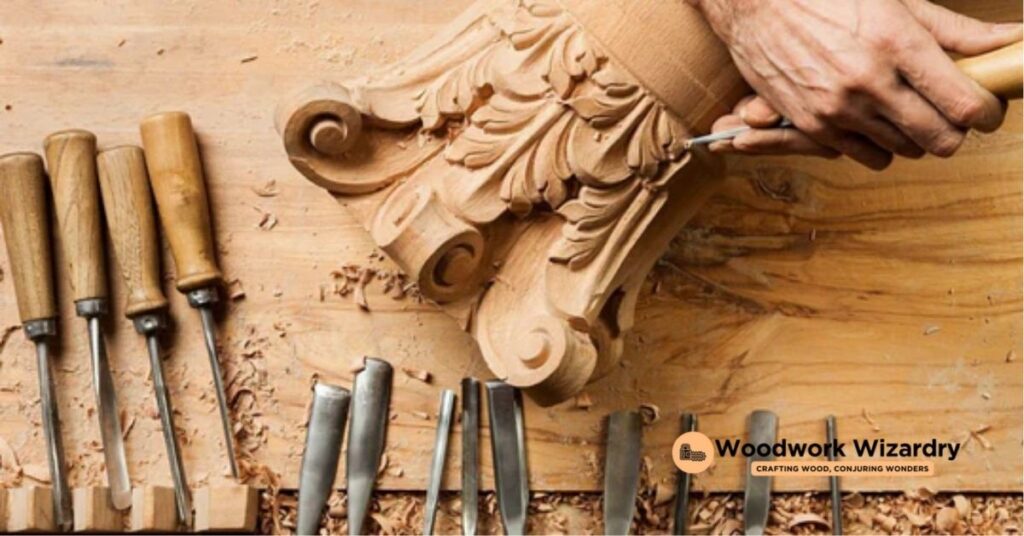
Every woodcarver relies on exact tools to shape and refine their creations. Equipping yourself with the right tools ensures accuracy and efficiency in your carving projects.
Carving Knives
Carving knives are foundational for wood carving. A detail knife excels at precision work, such as refining edges and adding intricate patterns. Use a whittling knife for removing larger sections of wood and shaping designs more broadly. Always maintain sharp edges to reduce resistance when carving.
Gouges
Gouges are indispensable for scooping and hollowing wood. A straight gouge handles general carving, while a spoon gouge is ideal for curved surfaces. V-gouges allow deeper cuts to define lines and create texture. Choose gouges with durable steel blades for smoother cuts.
Chisels
Chisels provide versatility in wood carving. Beveled-edge chisels enable controlled, shallow slicing, while straight-edge chisels are best for flattening and smoothing surfaces. When working on details, pairing smaller chisels with a steady hand improves accuracy.
Mallets
Mallets assist in applying controlled force to chisels and other tools. Wooden mallets reduce vibrations and are gentle on tool handles, extending their lifespan. A carver’s mallet with a rounded design enhances precision during detailed work, especially on intricate carvings. Select mallets suited to the intensity of your projects.
Additional Tools For Enhanced Carving
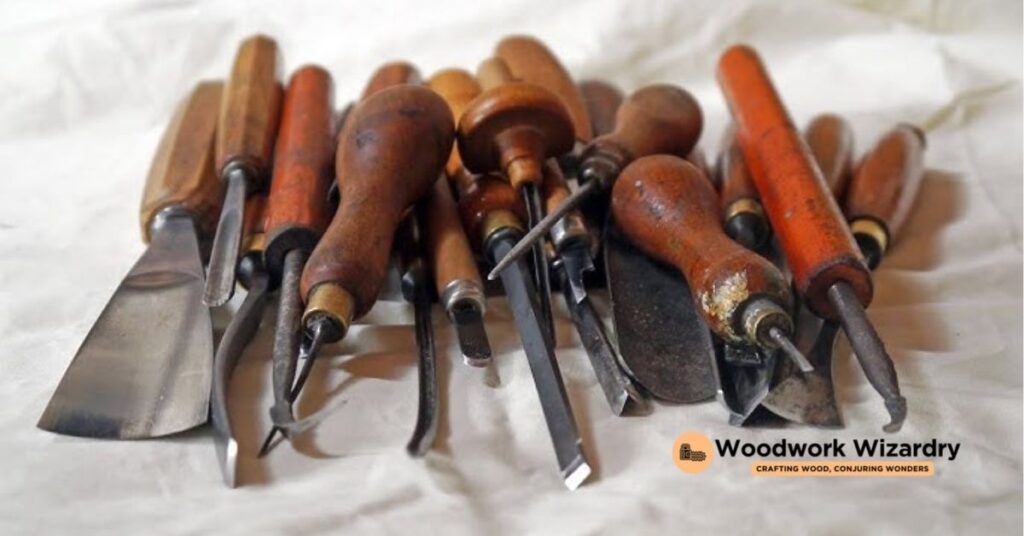
Improving your wood carving projects often depends on incorporating tools that support precision and quality. Beyond the essentials, these tools refine your process and improve results.
Sharpening Tools
Edge sharpness directly affects carving performance. Equip yourself with sharpening stones, honing rods, or leather strops to maintain optimal tool sharpness. Water or oil stones handle most sharpening needs for knives and gouges. Use a strop after sharpening to polish blade edges and extend their cutting lifespan.
Sandpaper And Files
Surface smoothing adds finesse to your carved pieces. Sandpaper, ranging from 60 to 400 grit, helps refine wood surfaces and eliminate rough edges. Files work well for detailed areas, such as grooves or small contours. Combine sandpaper and files to achieve a polished, professional finish.
Clamps And Vises
Stabilized workpieces improve safety and accuracy. Clamps hold wood securely when carving intricate designs, while vises provide a stable grip for larger projects. Opt for adjustable bench vises with soft jaws to prevent wood damage, ensuring versatility across various carving tasks.
Beginner-Friendly Tool Kits
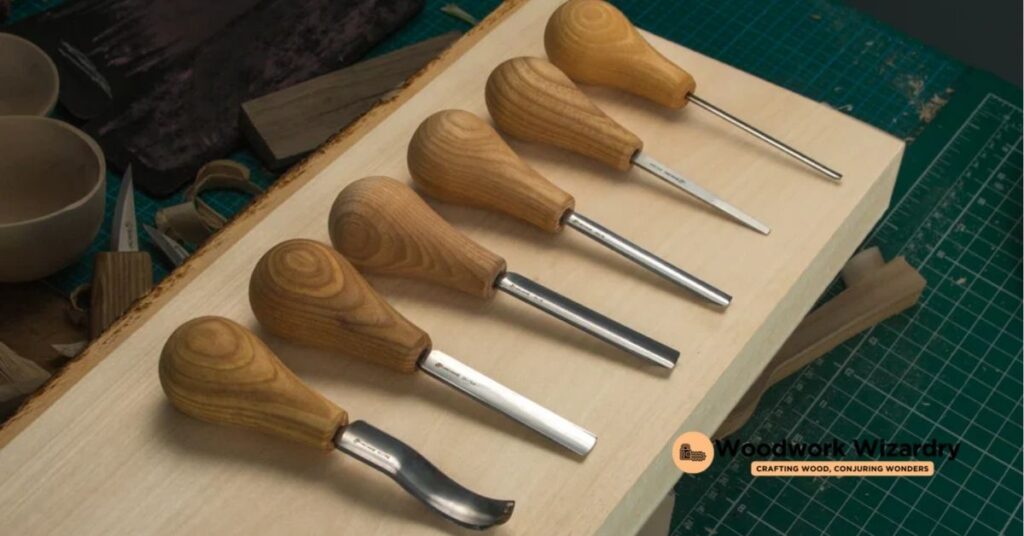
Starting wood carving is more enjoyable when you have a reliable set of tools designed for beginners. These tools simplify the learning curve, enabling you to develop skills without unnecessary frustration.
Recommended Starter Sets
Many beginner-focused tool sets contain essential items for practice and basic projects. A typical set often includes a carving knife, a gouge for creating curves or scoops, and a small chisel for detailed work. Some kits also come with a honing tool to keep your blades sharp. Seek kits that use durable materials like carbon steel for long-lasting performance. Brands such as Flexcut and BeaverCraft offer starter sets praised for their quality and ease of use.
Consider packages that include tools with ergonomic handles. These minimize hand fatigue during extended carving sessions. A set with various blade shapes, like straight, curved, and V-shaped, enhances versatility for different project types.
Affordable Options For Beginners
Budget-friendly kits ensure you can start carving without important investment. Entry-level sets often cost between $25 and $50, making them accessible while still functional for beginners. For instance, the Xacto Basic Wood Carving Set offers simplicity and variety at an affordable price.
Opt for beginner kits with a limited number of high-quality tools rather than inexpensive options with lower-grade materials. Low-grade tools dull quickly, hindering progress and increasing your maintenance workload. Affordable doesn’t have to mean compromising on usability, so research user reviews when choosing your first tools.
Tips For Choosing The Right Tools
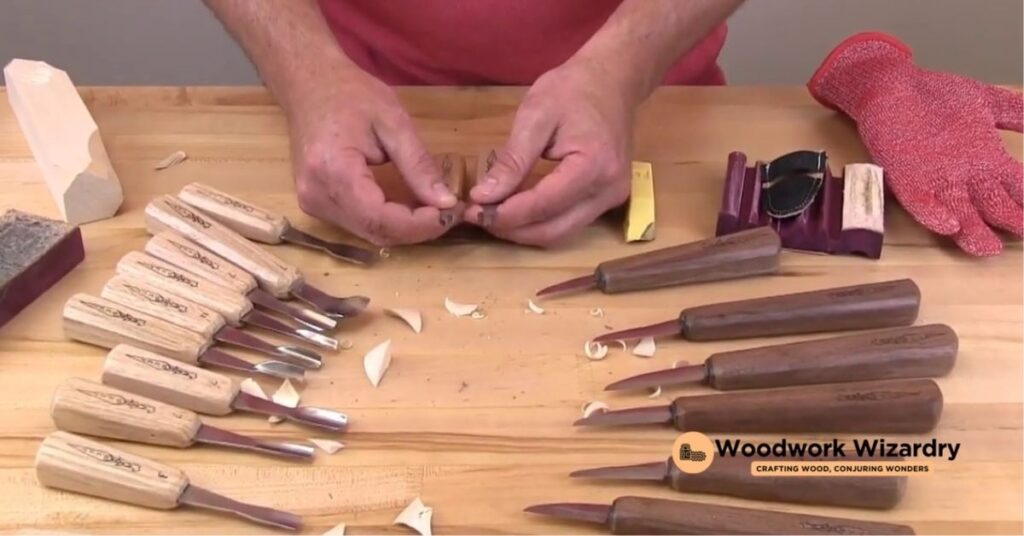
Selecting the right wood carving tools affects both your results and carving experience. Understanding key factors like quality and maintenance ensures your tools perform effectively.
Quality vs. Budget
Investing in high-quality tools often delivers better results and durability. Tools made from carbon steel cut more efficiently and stay sharp longer, which is crucial for precise carving. Ergonomic handles reduce hand fatigue, making extended carving sessions manageable.
While premium tools may seem costly, entry-level kits between $25 and $50 are available and suitable for beginners. Avoid low-grade tools with weak materials, as they’ll dull quickly and hamper progress. Instead, prioritize durability and performance, regardless of your budget.
Tool Maintenance And Care
Caring for your tools extends their functional life. Sharpening knives and chisels regularly with sharpening stones or honing rods prevents dull edges from compromising your work. Clean each tool after use to remove residual wood shavings or residue that could lead to rust.
Store tools in a dry location to protect them from moisture-related damage. Using proper tool bags or cases also ensures blades remain safe and sharp. Well-maintained tools enable smoother carving and better overall control.
Conclusion
Wood carving becomes a rewarding and enjoyable create when you have the right tools at your disposal. By carefully selecting quality tools and maintaining them properly, you set yourself up for success in every project. Whether you’re a beginner or an experienced carver, investing in durable, well-crafted tools ensures precision, ease, and lasting performance.
Take your time to explore options that match your skill level and carving goals. With the right tools and a commitment to honing your create, you’ll be able to bring your creative visions to life with confidence and skill.

